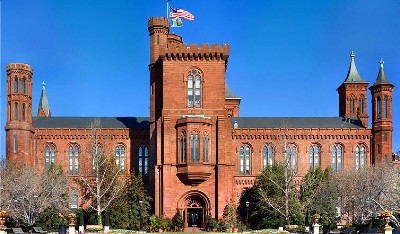|

There are many reasons why the Smithsonian Institution in Washington DC, is nicknamed America’s Attic. One is that in its sprawling complex of buildings there are 137 million separate items. If you’ve seen the second episode of the “Night at the Museum” movies, the fantasy plot features many locations and exhibits at the Smithsonian.
Objects in the world’s largest museum include early aircraft, space vehicles, important documents and scientific breakthroughs. Some are a bit more whimsical than historical. Consider those.
Lincoln’s Hat: According to museum info, the topper on display there was worn by Abe himself on the fatal night of April 14, 1865, when he attended a performance at Washington’s Ford Theater. It was there that John Wilkes Booth shot him.
Getting close to the still-intact hat, you’ll see the black silk band still wrapped around it. That was in mourning for sons Willie, who died at age 12 in 1862, and Eddie, who died at age 3 in 1850.
Amazing Mechanical Monk: Just 15 inches high, the wind-up, metal and wood automaton is a marvel of 16th Century clockwork craftsmanship. With a lifelike somber face, he walks in a squared area, lifts his arms, bows, moves his lips and nods his head in prayer.
Dorothy’s Ruby Slippers: The famed red-jeweled, size 5 shoes worn by Judy Garland in the 1939 movie classic, “The Wizard of Oz”, are on display. There are no actual rubies on the shoes, only burgundy sequins. Because of production needs, there were actually four pairs made for Judy. Three are in other collections, along with dozens of fakes.
George Armstrong Custer’s Buckskin Jacket: The actual coat Custer wore during the 1876 Battle of Little Big Horn was lost in bloody history. This authentic fringed one was donated to the Smithsonian by his widow, Elizabeth, in 1912, and is considered genuine.
Heroic Cher Ami: During an American World War I combat near Verdun in 1918, the historic Lost Battalion episode occurred. The isolated unit was threatened with being overwhelmed by enemy forces. Carrier pigeon Cher Ami flew back to American lines, and though wounded, delivered the message and the men were saved. si.edu/visit
|

